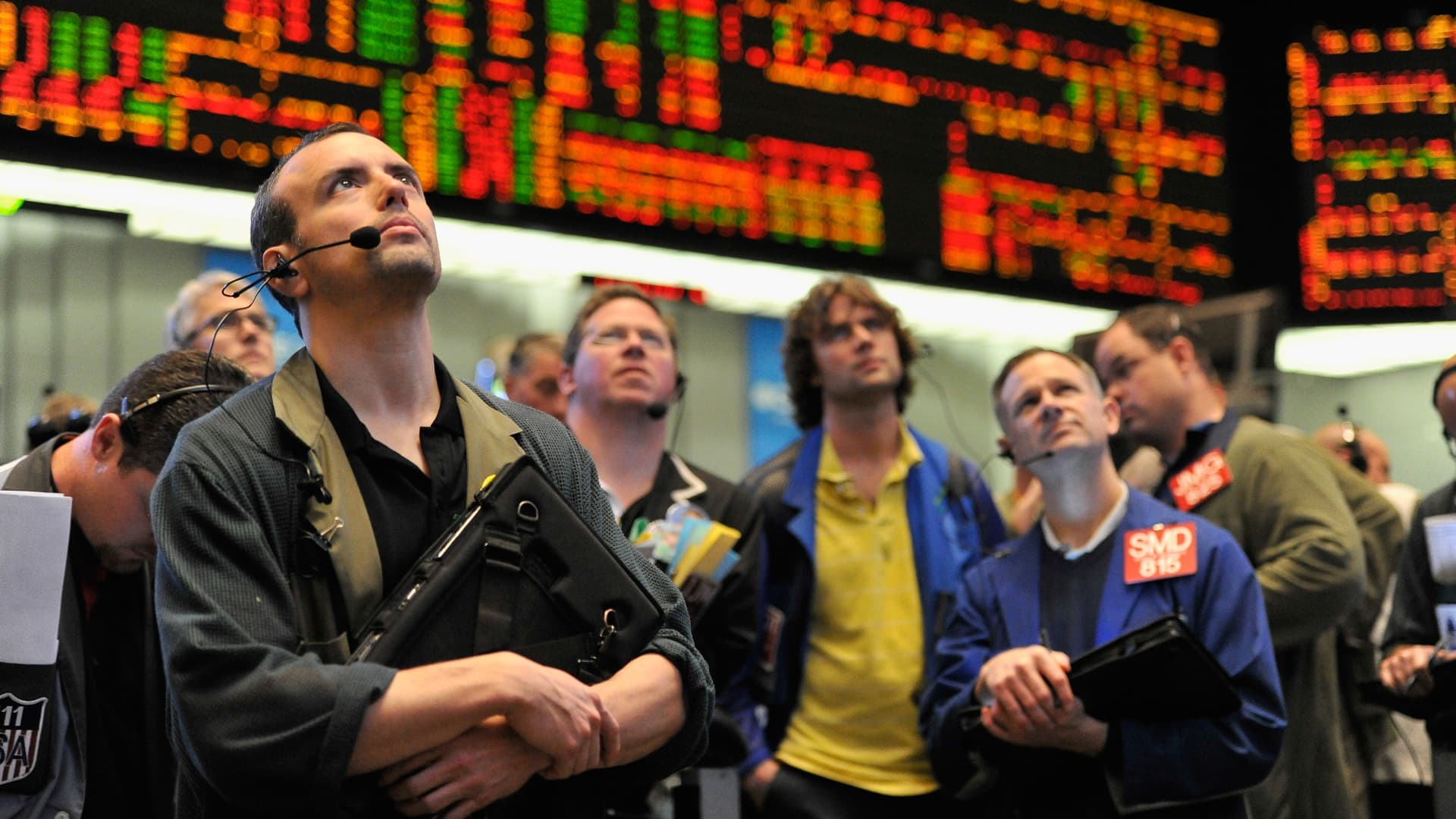Market execs watch the unfold on the Treasury yield curve, or the distinction between the longer length Treasury yields and shorter length yields. Normally, longer length yields, like the yield on the 10-year note are larger than the shorter length yields, like that on the 2-year yield. But the 2-year yield has now risen above the 10-year yield.
As of noon Tuesday, the 2-year Treasury yield was at 2.792%, above the 2.789% price of the 10-year. You can monitor this key unfold in actual time here.
That so-called inversion is a warning signal that the economic system may very well be weakening and a recession is feasible.
“There’s one thing afoot in investor sentiment that’s tough to disregard, given the inversion is going on with 10-year yields under 3%,” mentioned Ian Lyngen, head of U.S. charges technique at BMO. “I would not say it is a direct indication {that a} recession is a near-term danger. Rather it is per elevated concern about recession.”
One means to have a look at the significance of the yield curve is to consider what it means for a financial institution. The yield curve measures the unfold between a financial institution’s value of cash versus what it can make by lending it out or investing it over an extended interval of time. If banks cannot earn a living, lending slows and so does financial exercise.
After a burst larger to almost 3.5% in mid-June, the 10-year yield has slumped to 2.78%, and was hovering just under the 2-year word’s 2.79% yield. The 10-year had moved larger on worries about inflation, however reversed course as buyers grew to become extra anxious about the economic system. Yields transfer reverse bond costs.
The benchmark 10-year is broadly watched as a result of it influences mortgages and different lending charges. The 2-year is way more influenced by the Federal Reserve’s rate of interest hikes, and it has been transferring larger.
“I do not know in and of itself that it is a recession indicator,” mentioned Gregory Faranello, head of U.S. charges at AmeriVet Securities. “There’s a battle occurring between inflation and development for the Fed. My view is it is nonetheless inflation over development.”
The 2-year to 10-year curve first inverted March 31, then again briefly in June. Faranello additionally identified that the curve was inverted in 2019, warning of a recession. But as a result of the Federal Reserve was reducing rates of interest at the time, he mentioned a recession might not have occurred in 2020, have been it not for the pandemic.
To make sure, some buyers and economists usually need to see the inversion final for a major interval of time earlier than believing it’s forecasting a recession.
While the market has turn out to be fearful, many Wall Street economists don’t count on a recession this 12 months although some are predicting the economic system may enter a interval of contraction subsequent 12 months.
Faranello mentioned Powell was not too long ago requested about the potential for a yield curve inversion. “His reply was: ‘We’re not anxious about that proper now. We’re anxious about bringing inflation all the way down to 2%.’ It’s undoubtedly inflation over development, and the Fed isn’t anxious about an inverted yield curve,” mentioned Faranello.
Besides watching weaker knowledge, buyers are targeted on the Atlanta Fed’s GDPNow indicator, which forecasts that second quarter gross domestic product contracted by 2.1%. The forecast relies on incoming knowledge. If the second quarter does contract, it will be the second detrimental quarter in a row, which is technically thought of to be a recession.
“It will get an increasing number of credible the nearer it’s to the precise print as a result of it’s cumulative,” mentioned Lyngen. Growth in the first quarter contracted by 1.6%.
According to Bespoke, when the yield curve inverts “there was a greater than two-thirds probability of a recession in some unspecified time in the future in the subsequent 12 months and a higher than 98% probability of a recession in some unspecified time in the future in the subsequent two years.”

